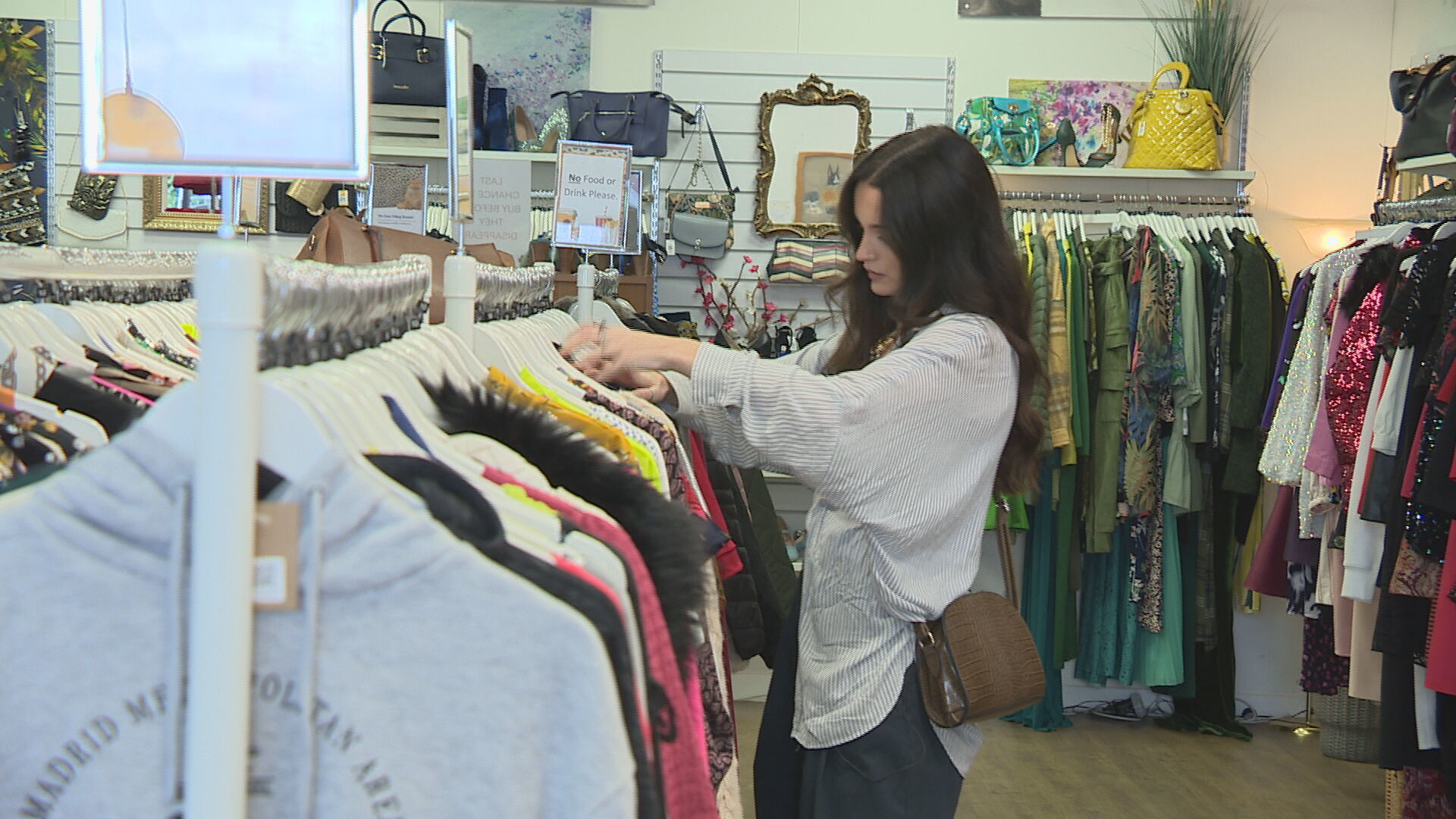Fashion
Fast fashion ‘major problem’ as textile recyclers overwhelmed with discarded clothes

The alarming scale of environmental damage caused by Scotland’s fast fashion problem has been laid bare by campaigners.
Fast fashion is more accessible than ever before – with online retailers and high street stores offering hundreds of new items every day, at cut-price rates.
But as the industry grows, so too does its impact on the planet.
Textiles make up just 4% of household waste in Scotland, but contribute nearly a third of our carbon impact according to figures from Zero Waste Scotland.
While overseas, thousands of tonnes of discarded fashion are piled high in landfill sites.
Campaigners are urging legislators and consumers to take action now, before the problem becomes insurmountable.
‘A major challenge’
Nathan’s Wastesavers in Denny is the biggest textile recycling facility in Scotland.
It takes in around 400 tonnes of unwanted goods every week, from clothing banks, schools, and charity shops.
Hundreds of staff sift through the garments to identify specific items like jeans or winter clothing, which are sent to wholesalers in East and West Africa and Eastern Europe.
Peter Page, group head of recycling, told Scotland Tonight: “Going back 20 or 30 years ago, we weren’t collecting 400 tonnes a week.
“It’s a major challenge and we have to adapt. We have to find more space in the factory, and we have to install new conveyor systems to cope with the demand.”
Nathan’s currently distributes around 70% of clothing for reuse, and around 27%, which is not suitable for reuse, is downcycled into things like insulation and carpet underlay.
 STV News
STV NewsBut despite taking in more clothing than ever before, the quality of the items is declining, making reuse more difficult.
He said: “Fast fashion is a major issue for us, and I think since lockdown people are doing a lot more shopping online.
“[What we find is] with this fast fashion and lower grade quality, we’re seeing that the recycling is increasing compared to reuse.
“I think that less than 1% of recycled clothing goes back into the circular chain of textiles, because the technology is not there, clothing is not designed to be recycled, and that’s the fundamental issue.
“It’s not designed to be recycled, so we need legislation to change.
“We need technology to allow us to pull the clothing apart, spin it back into new yarn and make new clothing again.”
Globally, the fashion industry produces more carbon emissions than international flights and shipping combined.
 STV News
STV NewsEducating consumers about that environmental impact is a challenge for groups like Zero Waste Scotland.
Campaigner Andrew Pankhurst explained that clothing made of synthetic materials has a higher carbon footprint.
He said: “The materials that they use are quite intensive to bring into the world as well. A lot of fashion items, more and more, are being made of materials that are often derived from types of plastics.
“So there are a number of different factors, but more than anything it’s the amount of stages that they have to go through before they reach that clothing rail in the shop in front of you.
“They’ve been through so much production. They build up their carbon emissions at every stage of that process.”
But Andrew says getting consumers to understand that impact is a real challenge.
“I think the difficulty with this is when we talk about carbon emissions, they’re not visible. You can’t see them, you can’t touch them” he said.
“That’s why some of the messages around plastic reduction have cut through a bit more, because we can see photographs of a turtle with a cotton swab up its nose or plastic bags in a whale’s stomach, that’s tangible and that inspires action.
“Sometimes it can be difficult to see the impact that it has on Scotland. I think that’s the same with all things that relate to climate change, things still kind of feel the same to us.”
Andrew says that despite the scale of the problem, we all have a role to play in reducing the environmental impact of our wardrobes.
“Putting a piece of clothing into the bin is far, far more significant than putting anything else into the bin.
“It’s much better to have a smaller number of really high quality items in your wardrobe that you love and that you’re going to wear loads of times than it is to just have hundreds of things that you don’t really care about, and which do feel kind of disposable to you.
“You’ve got to make that decision based on your budget and your situation. So there’s no judgement and it’s not like we’re sitting here trying to point a finger at anybody or anything like that.
“It’s really just about saying if you’re mindful of the impact that clothing has, that’s as much as can be asked of you.”
A Scottish Government spokesperson said: “Whilst the total amount of waste going to landfill in Scotland has nearly halved over the past decade and the overall recycling rate is at its highest level, 62.3% since records began in 2011, we must intensify our work to reduce emissions and waste.
“The Circular Economy (Scotland) Act 2024, passed earlier this year and our draft Circular Economy and Waste Route Map, together, will drive-up Scotland’s reuse and recycling rates supporting our sustainable resource and climate goals.
“Whilst it’s too soon to evaluate the impact of the Act, it has established a legislative framework to support Scotland’s transition to a zero waste and circular economy, increase reuse and recycling rates, and modernise and improve waste and recycling services.
“Our draft Route Map sets out clear actions we need to take to progress a circular economy, including actions to address textile waste.”
Watch the full report, Scotland Tonight: Slowing Down Fast Fashion, at 8:30pm on STV and the STV Player.
Follow STV News on WhatsApp
Scan the QR code on your mobile device for all the latest news from around the country











